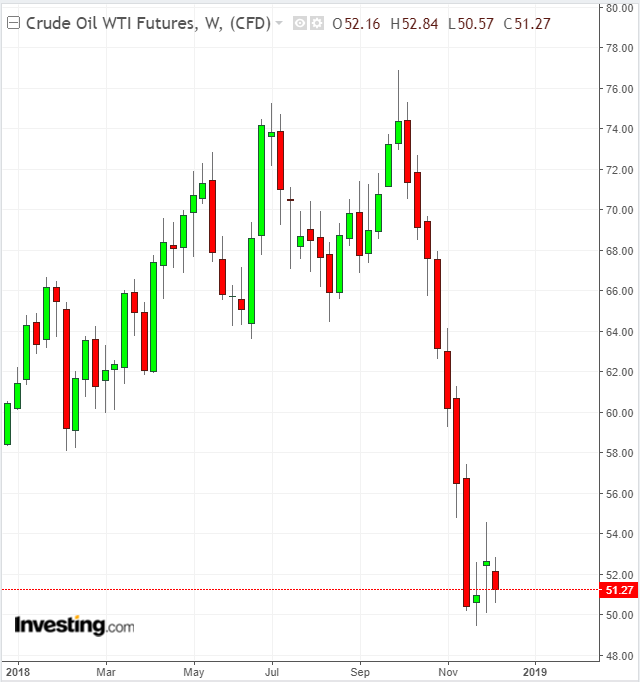There may still be a few weeks left to 2018, but with business winding down for the year, all eyes are now on 2019. Here are three key issues that will impact oil prices in the first few months of the new year.

1. Production from OPEC and Russia
Last week, OPEC producers and their non-OPEC partners decided to cut oil production slightly—by 1.2 million barrels per day from October levels. In reality, this translates to a large cut for Saudi Arabia, which actually produced 350,000 more barrels per day in November than in October. Iran will be able to keep production at stable levels—if it can, since its output actually declined by 31,000 barrels per day in November.
If OPEC oil suppliers adhere to the agreement, which is unlikely, total OPEC oil production should amount to 32.214 million barrels per day in January, which will represent a cut of only 866,000 barrels per day from November production. After OPEC announced this cut agreement, oil prices jumped slightly before settling down for the day, a clear indication that these curbs—even combined with the additional contribution of 400,000 barrels per day in cuts from the OPEC+ producers—are not enough to encourage an upward momentum in prices. Will this cut be enough to keep prices stable in 2019? Without an output cut from elsewhere, it seems unlikely.
2. Iran sanctions
The United States granted Significant Reduction Exemptions (SREs) to eight importers of Iranian oil in November. These exemptions will be up for review in April and the big question is whether they will be renewed, reduced or revoked altogether. These exemptions account for a minimum 850,000 barrels per day in oil supply. This is not a large amount, considering that the global oil industry produces around 100 million oil barrels per day. However, in today’s oil market, it's significant enough to impact prices.
OPEC and OPEC+ are going to reconvene in April to evaluate their production cuts, in part due to the fact that the U.S. will be reviewing the SREs at that time. One indication of whether the U.S. might extend the SREs beyond April could be found in the upcoming review of the 45-day exemption given to Iraq to import Iranian natural gas.
Iranian natural gas provides Iraq with 50% of its electricity. During a visit on December 11, U.S. Energy Secretary Rick Perry urged Iraq to develop other sources of energy and diversify its sources of natural gas. He did not pledge any U.S. funding to help Iraq with this effort, but will encourage U.S. companies to invest in Iraqi energy infrastructure.
Iraq plans to send a delegation to the United States to lobby for an extension of their exemption. The formal decision on this natural gas exemption will signal how the U.S. plans to deal with the already-granted oil exemptions come April. Eliminating the SREs in April would put oil prices higher if OPEC and Russia do not also decide to relax their cuts.
3. U.S. oil production
America is now the world’s largest oil producer. Recent data from the EIA revealed that the United States set a new record in September, producing 11.5 million barrels per day. This trend continued in November, with the EIA estimating 11.5 million barrels per day.
Last week, the U.S. was also technically a net exporter of crude oil and fuel, although this week that trend was reversed. When it comes to 2019, the EIA is now forecasting that U.S. production will average 12.1 million barrels per day. Production growth could be negatively impacted by ongoing trade wars, rising interest rates and infrastructure constraints.
However, indications are that at least one Chinese importer will resume its purchases of U.S. crude oil starting in March. There are also some whispers that the U.S. Federal Reserve will not raise interest rates nearly as aggressively in 2019 as it did in 2018. Fewer interest rate hikes would help keep investment flowing to shale oil companies in 2019.
